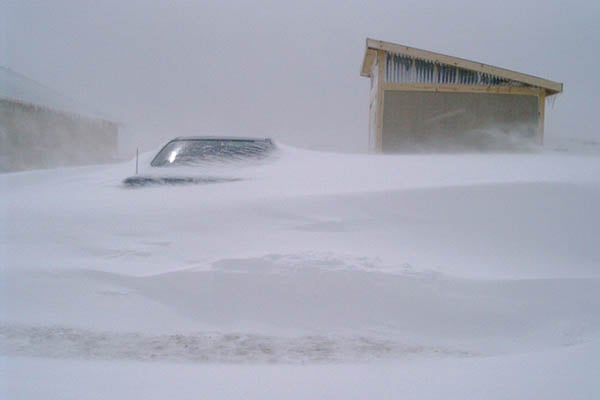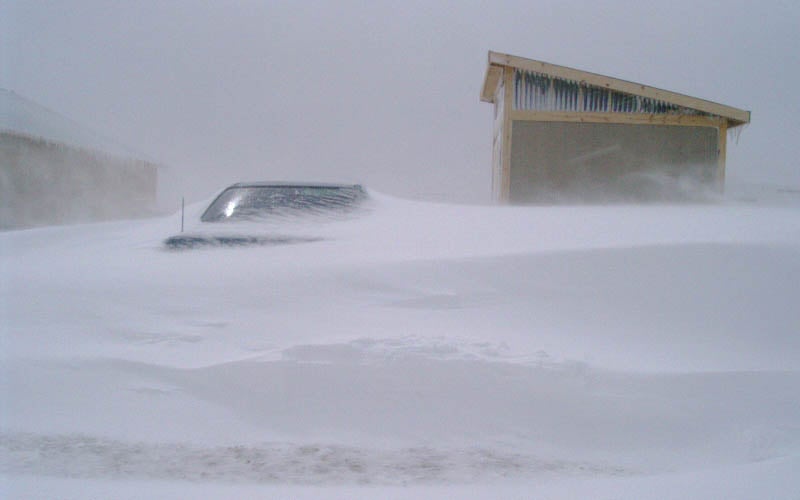Last Updated on
It is easy to feel safe when you face winter weather in your vehicle. The heater is running and the wipers and defrost keep the windows clear. Should something happen, your phone is in the console so you can call roadside assistance. However what happens if you phone doesn’t get service and you get stuck in an area where no one else is traveling? Your nice, toasty car can become a prison in a matter of hours should severe winter weather hit.
For many in the country, the idea of preparing for winter survival in a vehicle is foreign, but for others it is a common danger. Even if you only have to spend the night, you can be in for a rough and potentially life threatening ordeal if you’re not prepared. Before the heavy storms hit this winter, here are some tips on how to survive in your vehicle if you get stuck in a storm.
First Moments
When the unexpected happens and you think you might be stuck or stranded in your car, it’s extremely important to stay calm. Any erratic or panicked behavior will likely make your situation worse. Take a few deep breaths and think your situation out thoroughly before acting. Don’t slam down the gas pedal and spin your tires. This will just make your situation worse.
First, flip on your emergency flashers. You never know when someone else might see you or worse hit you. If it is safe, step out of the vehicle momentarily to survey your situation. Make sure you put on your gloves, coat and hat before stepping out. You don’t want to chill yourself unnecessarily. Your first course of action will be trying to free your vehicle if possible.
Getting Unstuck
Check your tires and look under the vehicle to see what may be keeping you in place. Often a pile up of snow can wedge your vehicle in place and cause your tires to spin. Removing snow to create a path for your car to move can often free your vehicle. Give your tires some space on each side, and don’t forget to clear the undercarriage if there is a lot of snow buildup under there. The best tool for the job is a shovel, particularly a metal one that can break up ice. Just watch what you do around the tires or undercarriage. You don’t want to cause more damage trying to remove snow. Full-sized shovels will provide a lot of reaching action and make the job easier, but some vehicles simply cannot hold a long handled shovel. In that case, you may want to opt for a quality folding shovel. Keep it in your trunk or vehicle at all times, it’s really a handy tool to have.
As you clear snow, watch how you sweat. Don’t work frantically and get soaking wet from the shoveling. All that moisture could lead to hypothermia, which is a very bad thing to have when you’re stranded. Work at a slow and steady pace and stay calm. Always be aware if you’re overheating, and take a break if need be.
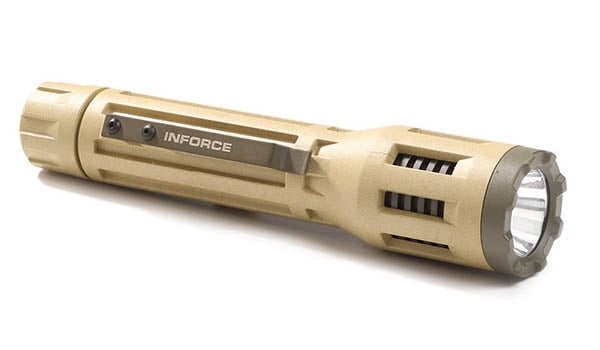
Once you’re satisfied with the snow you’ve cleared, get back in your vehicle. As you try to go forward, keep your vehicle in a low gear. Try to edge into it slowly vs. hitting the gas. Going in reverse requires the same patience and easing into the gas pedal. If that doesn’t work, you can try to rock the vehicle into moving again. Alternate between reverse and forward to free your car.
In cases where this still doesn’t free you, there are a few other things to try. Many people carry sandbags in the vehicles during the winter to improve traction. You can create more traction by sacrificing one of these bags and pouring it under your tires. You can also sacrifice the floor mats to create traction under your tires. Just try to stay calm as you try these things. This is a problem you can solve if you only keep your head.
What To Do Next
If it becomes apparent you’re going nowhere, it’s time to call for help if you can. In certain circumstances this may be your first step, like if you’ve deviated far off the road into a deep ditch or worse. Call roadside assistance or a family member if you don’t have a roadside plan. If you’re hurt or in a dangerous situation, go straight to calling 911. Often making this call will be the beginning of the end of your ordeal, but it’s important to be cautious until help arrives. If you can’t reach anyone, say if your phone was damaged in the crash or isn’t getting service, then you need to be especially cautious how you plan your next steps.
It’s now time to budget your remaining fuel. But first, check your exhaust pipe. Make sure it is completely free from snow and clear out the area around to give the exhaust space to escape. You’ll have to check the tailpipe regularly if it is snowing as it could become covered up again over time. Failing to clear your tailpipe could result in carbon monoxide poisoning. Be very careful not to fall asleep while you have the vehicle running. You’ll loose the rest of an important resource in fuel and you’ll be risking CO poisoning.
You’ll want to turn the car off to conserve fuel and then turn it back on to warm you when you need it. You should be able to handle the vehicle being off for an hour or longer before turning it back on to warm yourself. Be thrifty and only use as much fuel as you can stand. This is where items like extra coats and blankets are a must have in a vehicle. If you’re not alone, huddle with other passengers to conserve warmth. Try to stay warm as best you can without relying on the car too often. Don’t expect help to be on the way. It could be a long night and you should prepare for the worst.
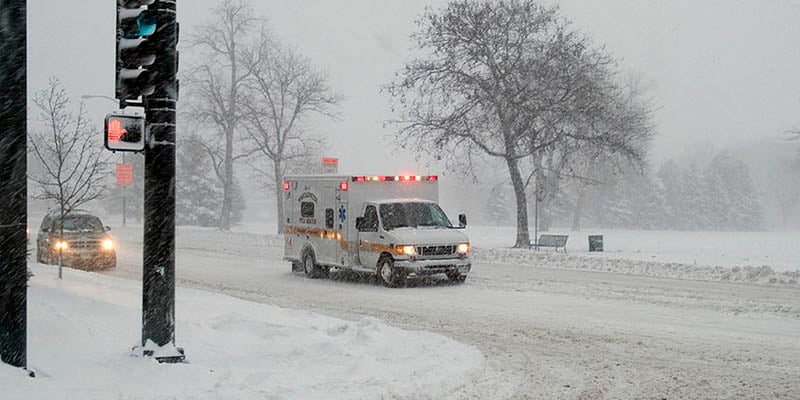
Hydration
In the winter, it is easy to overlook dehydration. When you’re in a stressful situation like getting stranded in your car, you can completely lose sight of the need to drink water. Try to sip water every so often as you wait out the ordeal. It’s great to have a backup jug of water in your car as long as it isn’t frozen. Since your primary source of water can freeze, it’s good to have a backup container to melt snow in. You can either place it up to the heat as you turn on the car, or hold the container close to your body (if it is sealed) to melt water as you wait. You won’t get a ton of water from melting snow, but it’s better than nothing. At first resist the temptation to eat snow. It can lower your body temperature, which is especially dangerous if you’re close to hypothermia already. If there is no other choice, eat a little snow and let you’re body warm back up before you eat more.
Gear Checklist
Everyone should have a basic winter emergency kit in their vehicle. Typical items include jumper cables, radios, emergency lights and more. Here are several more items to consider:
- Blankets – A must-have item for any winter vehicle kit. If you often travel with several passengers, stow several blankets in your car.
- Extra Coat – Keep a backup coat in your car in case the one you’re wearing gets wet. You can also wear it over your other coat.
- Hats and Gloves – Working outside in the winter to free your car absolutely requires hats and gloves. You should also wear these as you wait things out inside the vehicle.
- Hand Warmers – A nice small addition to any emergency kit that could help in a big way when you get extremely cold.
- Folding Shovel – Make sure you get a sturdy shovel with strong joints that you can rely on. Don’t go with the cheapest variety out there. It’ll break when you need it most.
- Flashlight / Headlamp – A vital addition to any kit, flashlights and headlamps can be used to signal for help or illuminate what you’re working on. Don’t forget a set of backup batteries.
- Knife – A sharp knife can free you from a stuck seatbelt in a crash and perform a variety of other tasks.
- Water Jug – A jug of water is the cheapest item in this kit. Even though it might freeze over, it’s worth having just in case.
- Empty Pot or Container For Melting Water – A good backup to a basic water jug is a container to melt water in. If you get trapped for a long time, you can even build a fire outside the vehicle to melt snow. You can also re-purpose smaller water bottles and use them to melt snow close to your body.
- Sandbags or Kitty Litter – Both of these are good agents to help your car gain traction on surfaces like ice.
- Lighter / Matches – You may not ever need it, but a lighter is a vital part of any survival kit.
- Dry Food / Energy Bars – Survival food with a long shelf-life is an important addition to any kit. If you get stranded for a long time, you’ll need that energy.
- Cell Phone Power Adapter – When the car is on, you should be charging your phone. Even if you don’t get a signal, a well-charged phone may be your lifeline later on. Don’t forget to close all apps and lower the brightness so the battery lasts longer.
Stay Or Go?
The last subject we come to is whether to stay with the car or leave to find help. This really depends on your situation. Can you be seen from the road? How remote is your location? Can you call for help? Are you out of fuel? How badly are you hurt? Generally it is wise to stay with the vehicle for a day or so before plotting an exit. If you know help is on the way, you should stay put longer. However, there have been cases where people have stayed in the vehicle too long and have become too weak to seek help. If you’re out of fuel and supplies and no one seems to be coming, then it’s time to self-rescue. Leave a note if you can and leave in the morning so you’ll have a full day’s light to try to get to safety before night hits.
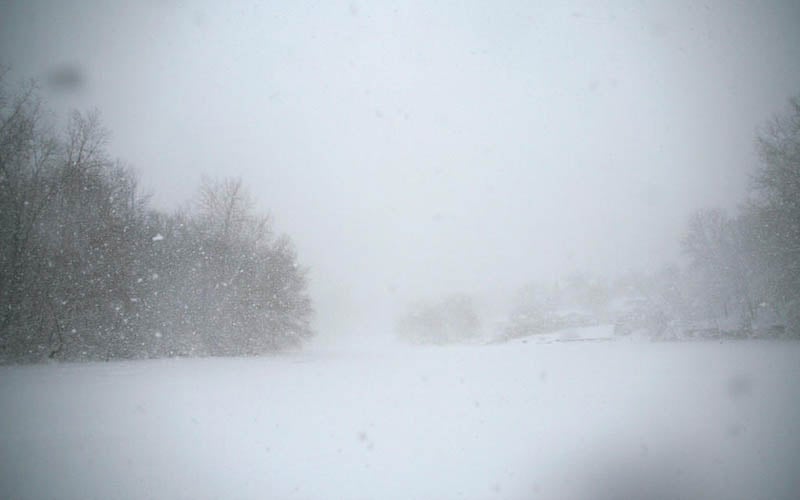
It sounds crazy to think about, but if you get stranded in your car for a long time, self-rescue may be your only choice.
Image four courtesy of Wikimedia Commons.
